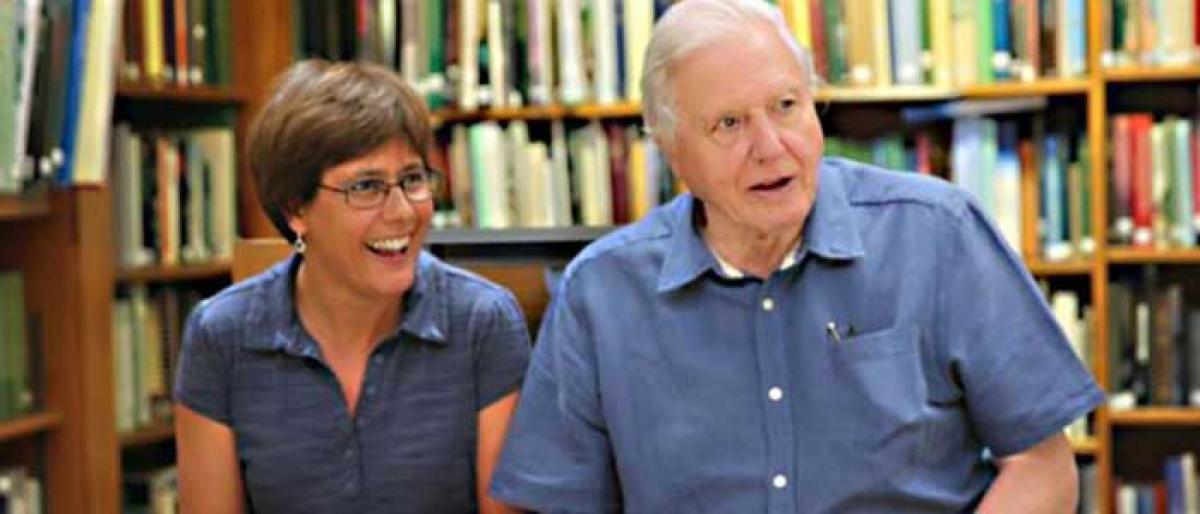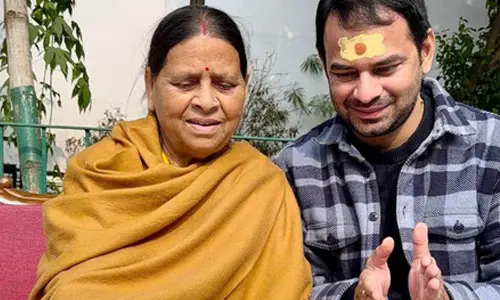Getting close to nature

Sharmila Choudhury, Director of ‘David Attenborough’s Natural Curiosities’ grew up in Kolkata. Sharmila shares that when she was 15, she saw the screening of David Attenborough’s ‘Life on Earth’ series which was the first big blockbuster and it was screened by the WWF India at that time and that literally changed her world.
Sharmila Choudhury, Director of ‘David Attenborough’s Natural Curiosities’ grew up in Kolkata. Sharmila shares that when she was 15, she saw the screening of David Attenborough’s ‘Life on Earth’ series which was the first big blockbuster and it was screened by the WWF India at that time and that literally changed her world.
“From that point onwards, I thought this is what I want to do; I want to make wildlife films like David Attenborough. I don’t think I imagined at that time that I might end up working with him. But now I have worked with him in BBC and as a freelance producer for 20 years and probably a dozen projects with him. That’s how I ended up here,” she recalls.
Excerpts:
How was it working with Sir David Attenborough?
Absolutely incredible! He is a really delightful person to work with. He is passionate about his subjects and hugely knowledgeable. He is very particular about being factually correct which I think is absolutely professional and crucial in educating people and this is why people trust him so much. He is also absolutely attuned with animals; he is very professional when it comes to delivering to cameras. He will deliver his lines while he has been puked on the animals and nothing fazes him. He is the ultimate professional in our business to work with and is very lovely and a kind man as well.
Tell us about the difficulties while making a documentary about nature?
Generally, the main challenge is always getting close to animals, finding out some new stories that nobody has heard before or something that has not been filmed before. Being in the right place, at the right time or in that particular area or event when it’s happening. Before we actually go out to film, a lot of time is spent back here researching and trying to make contact with experts in the field so that when we do go out without our cameras, we have the best chance of getting the behaviour that we want to achieve.
In terms of this particular series, ‘David Attenborough’s Natural Curiosities’, it was a very different kind of show. It wasn’t just pure wildlife that we were trying to film. We were trying to combine historical stories about the animals with the natural history. The idea came about because David Attenborough has always been fascinated by the discovery of the natural world and of particular animals and some of these animals have really extraordinary stories in history of how we first discovered them, the myths about these animals and the through the mysteries that the early naturalists explored and just couldn’t solve.
But today with modern science, we unravelled some of the mysteries and we found some myths so that we know how much understanding we have about the series. In this series, what we have tried to do is that we tried to find animals that have extraordinary stories from the past to tell and it could be animals that you and I are very familiar with, that we have seen many times on TV before, but these are stories that most people hopefully wouldn’t have heard before and that would amaze them.
What kind of planning you did before shooting for each episode?
We spent about a month planning each episode. The planning involved looking into the literature to find out what was known about this animal or is known today, finding scientific papers and speaking to the scientists who worked on these animals. The other challenge for this particular series was we not only needed to film the animal itself or find some existing for each of it but we also had to find the historical artefact that goes with this story.
For example, often that involves trying to find the first specimen of that animal that was discovered by science. That might be 200 or 300 years old and would be sitting in some New Zealand cupboard and we would have to find out where is it, is it in London, is it in Paris, New York, where would we like to film it and what condition is it in? All of this is very challenging, but at the same time also very exciting because when you do find these specimens where only the curator is allowed to touch them, it is a huge privilege and an extraordinary feeling.
What are the challenges you faced as a director?
One of the main challenges was that we wanted to try to show ancient specimens and artefacts. But obviously they are very precious, they are very old. They easily get damaged if somebody handles them wrongly or if it is exposed to a lot of cameras, technical equipment and sunlight.
So, trying to be respectful of the people who owned these specimens, whether it’s a museum or a private person’s collections trying to not damage these valuable artefacts is a challenge. At the same time, trying our best to get the kind of shots we needed and allowing David Attenborough enough time to save peace to the camera.
Tell us about your future projects?
We’re always looking to develop new ideas with David Attenborough, so we’ve got a couple of things we’re talking to him about. But he is now going to be 92 this year. So he can’t and won’t plan ahead too fast so any project we come up with needs to be realisable in a very short period of time. Aside from that, I’m in contact with some wonderful people in India, especially the younger people who watch breaking into the field and who know my filmmaking and I hope that we can collaborate in some way to get some project in India off the ground that might be of more interest to the Indian audience.
David Attenborough’s Natural Curiosities’ airs on Sony BBC Earth.














